Using New 3-D Seismic Attributes to Identify Subtle Fracture Trends
in Mid-Continent Mississippian Carbonate Reservoirs
Susan E. Nissen and Timothy R. Carr
Kansas Geological Survey, University of Kansas
Kurt J. Marfurt
Allied Geophysical Laboratories, University of Houston, Houston, TX 77204
Abstract
Mid-Continent Mississippian reservoirs are primarily naturally fractured, solution-enhanced, multi-layered shallow shelf carbonates with strong bottom water drives. Oil production in these reservoirs is strongly influenced by fracturing. The fractures can either be open, permitting water channeling from the underlying aquifer, or shale-filled, providing compartmentalization of the reservoir.
New 3-D seismic volumetric reflector curvature attributes have the potential to reveal subtle lineaments that may be related to fractures in these reservoirs. Volumetric curvature attributes are calculated directly from a seismic data volume, with no prior interpretation required, and have been shown to be useful in delineating faults, fractures, flexures, and folds.
Volumetric curvature attributes applied to a 3-D seismic survey over a Mississippian reservoir in Ness County, Kansas, reveal two main lineament directions within the Mississippian, with orientations of approximately N45E and N45W. The NE-trending lineaments parallel a down-to-the-north normal fault at the northwestern corner of the seismic survey, and, on average, have greater length and continuity than the NW-trending lineaments. Geologic and production data suggest that the NE-trending lineaments may be related to shale-filled fractures forming reservoir compartments, while the NW-trending lineaments may be related to open fractures that are conduits for water. Both sets of lineaments are related to karst-enhanced fracturing related to the pre-Pennsylvanian regional unconformity.
Understanding the orientations of open and filled fractures in Mid-Continent Mississippian reservoirs is an important pre-requisite for effectively using techniques such as targeted infill drilling, horizontal drilling, and gel polymer treatments to enhance production from these mature reservoirs.
Mid-Continent Mississippian Carbonate Reservoirs
Typical Mid-Continent Mississippian carbonate reservoir
- subjacent to regional pre-Pennsylvanian unconformity and karst surface
- multi-layered shallow shelf carbonates
- solution-enhanced natural fractures
- strong bottom water drive
Oil production in these reservoirs is strongly influenced by fracturing. The fractures can either be open, permitting water channeling from the underlying aquifer, or shale-filled, providing compartmentalization of the reservoir.
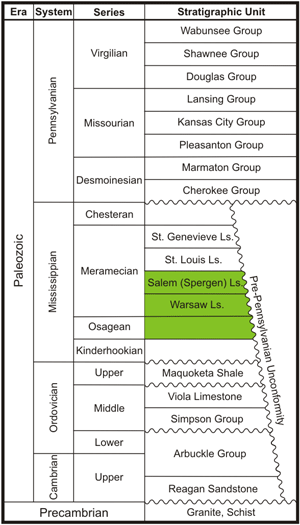 |
Generalized stratigraphic section for Kansas. Multi-layered shallow-shelf carbonate reservoirs are found in the Salem (Spergen), Warsaw, and Osagean intervals, subjacent to the Pre-Pennsylvanian unconformity surface. |
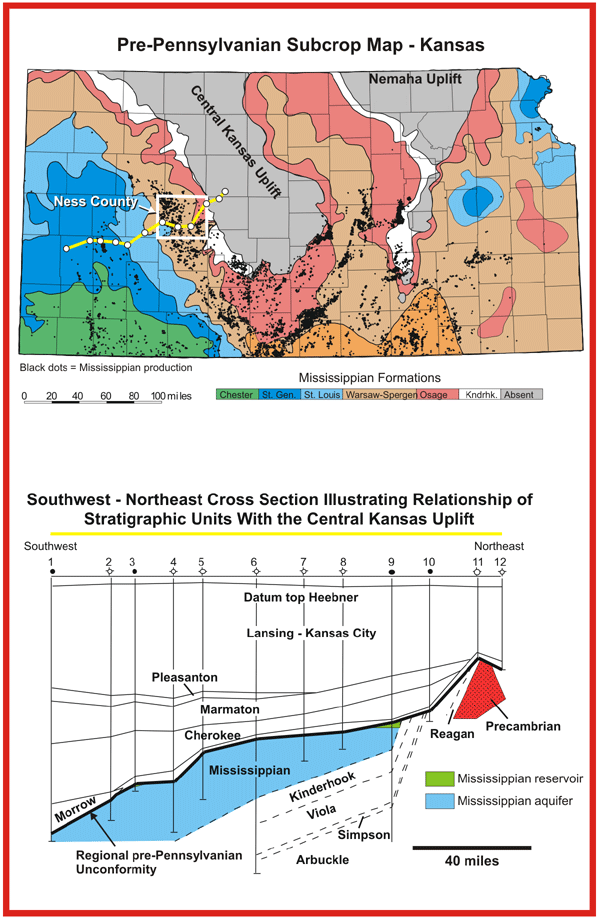
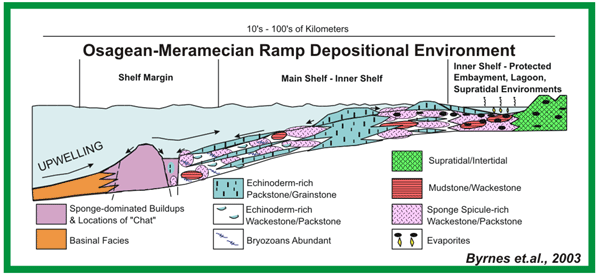
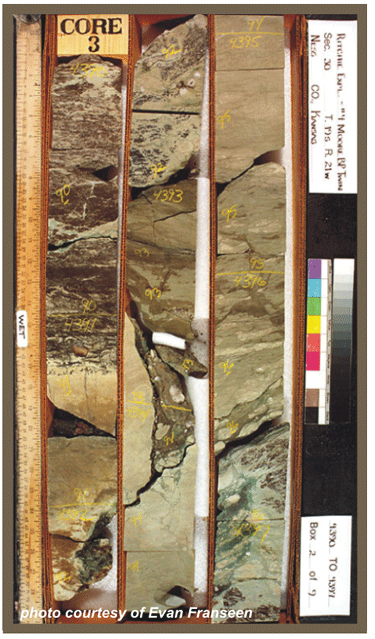 |
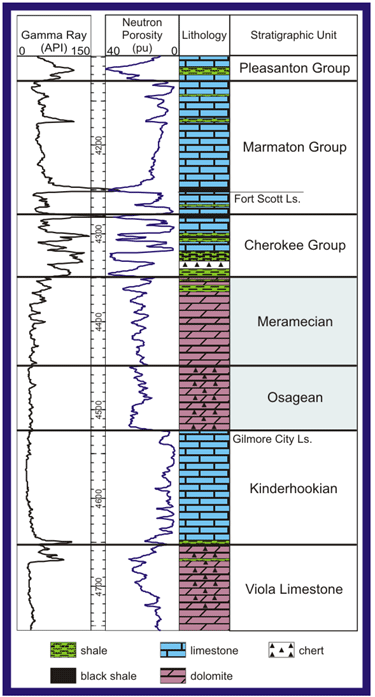 |
Core photo from Schaben Field, Ness County, Kansas, showing fracture and infill in the Osagean near the pre-Pennsylvanian unconformity surface. |
Stratigraphic section from a well in Dickman Field, Ness County, Kansas, showing the porous Mississippian dolomite aquifer (light blue), which supports the bottom water drive for the Mississippian reservoir. This aquifer extends down to the low porosity Gilmore City Ls. (top Kinderhook) throughout the Mid-Continent. |
http://www.kgs.ku.edu/PRS/AAPG2005/karst/p1-01.html
Last Modified December 2005